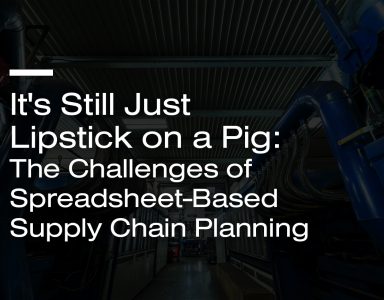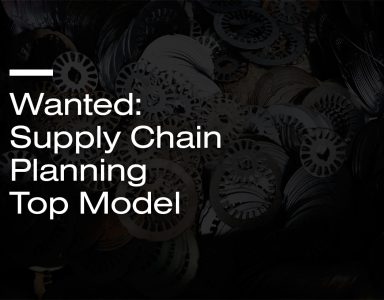Let us continue with more financial based definitions for inventory.
There are five ways that Finance can value the inventory. Most companies choose a method and rarely change. The methods are
– First in, First Out (FIFO)
– Last in, First Out (LIFO)
– Average Costing (also called Moving Average)
– Standard Costing
– Order Specific Costing
FIFO: This is the method that matches best how Supply Chain professionals think and manage inventory. FIFO is based on the simple premise that inventory is consumed in the same order it is received. The oldest on-hand inventory is used first and costed as such. The actual oldest inventory items do not have to physically consumed first, but the consumed inventory will be costed as if it was. In inflationary time periods, using FIFO will result in the following as compared to the other methods:
– Lower COGS as older items cost less
– Increased earnings before taxes – lower COGS means higher margins
– Increased taxes due to increased earnings
– Decreased cash flow – more money is tied up in inventory on-hand
In deflationary time periods, the opposite occurs.
LIFO: This method is the opposite of FIFO. Inventory is consumed in the reverse order it is received. The most recently received inventory is consumed first. As in FIFO, the physical units do not have to be consumed in this order, they are just treated as such from a cost accounting standpoint. The benefits of LIFO in inflationary and deflationary time periods are the exact opposite of the FIFO case. In inflationary time periods, using LIFO will result in the following versus the other methods:
– Higher COGS as newer items cost more
– Decreased earnings before taxes – higher COGS means lower margins
– Decreased taxes due to decreased earnings
– Increased cash flow – less money is tied up in inventory on-hand
The opposite of the above will happen in deflationary time periods. It should be noted that in the US, companies need to justify and get the approval from the IRS to use LIFO costing.
Average Costing: As the name suggests, inventory on a specific item is averaged based on what is on-hand, consumed, and what is brought in by item. The average cost could be calculated perpetually, but the great majority of customers that use this costing method do so periodically on a monthly or quarterly basis. Average costing is a smoothing calculation i.e. it smooths the effect of inflation, deflation, and other price swings.
Standard Costing: In a given period, the value of all inventory items is assigned. These costs do not change in that period. The period is usually a month or a quarter. Sometimes it is annual. Rarely is it less than a month. This method provides the most predictable COGS and revenue in a given period… assuming sales are on target.
Order Specific Costing: The actual cost of each item used to make or assemble a finished good is used to make the COGS for that particular item. It requires good systems, whether manual or computer, to track and account for these component costs. This method is used more in make to order industries where production volumes are low and the products are very complex and expensive e.g. locomotives, airlines, ships, etc.
Which method should be used? This is dependent on the company structure, objectives, and the nature of the business. Sometimes legal requirements or restrictions will even influence this decision. The decision is not usually in the hands of the Supply Chain. It is a General Management, Finance, and Legal decision with Finance taking the lead. The Supply Chain can have input but we are not the primary driver in these kinds of decisions. Once a decision is made, it is not usually reconsidered for years. Costing methods are changed with great deliberation when there is a major shift in economic conditions (think hyper-inflation) or when implementing or updating an ERP. The latter allows the organization to reconsider all “as is” processes and policies.


